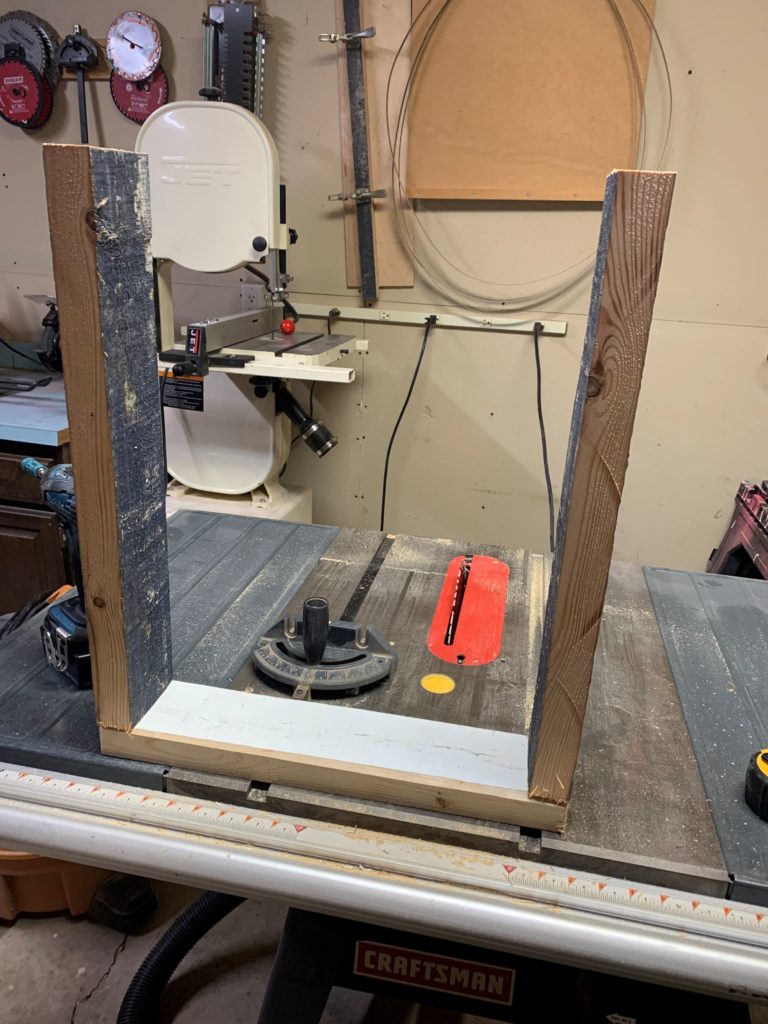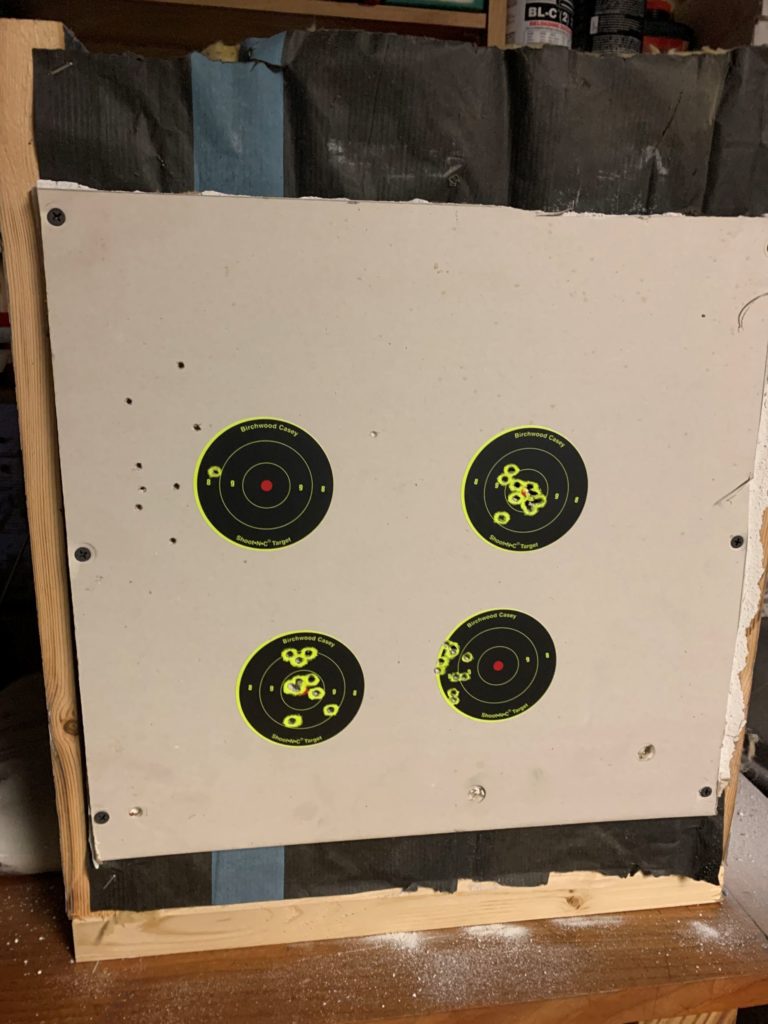I have wanted not just make energy measurements but also to see practical performance this year. This means that I need targets that represents practical or real life situations. Many years ago, I occasionally liked to visit a site called The Box O Truth which seems to be a forum these days. It started out as a guy that would build targets and test different loads against them.
I decided to build my own Box of Truth. Not necessarily to duplicate what already has been done but to satisfy my own curiosity. I built what represents an interior partition wall to see if it will stop air rifle pellets. If not, is there a pellet weight or energy that will be stopped? This is a question of safety, what happens when a projectile hits an interior wall.


There are all kinds of variations that could be built. Instead of two sheets of drywall, I could add sheathing and siding representing an exterior wall. Since my pellet trap has a 3/4″ sheet of plywood for the back, I already know that it cannot penetrate that thickness. But, if I was testing firearms, that might be useful information. You could also build several of these things to represent the penetration of several rooms.


From top left to bottom right is Crossman Copperhead (3.5 ft/lbs), Crossman Piranha (11.6 ft/lbs), Gamo Blue Flame (16 ft/lbs) and H&N Slug HP (12 ft/lbs). The BB was from the Crossman Legacy 1000 at four pumps while the remaining pellets were from the Crossman Optimus. All three pellets penetrated the ‘wall’. The BB did not. I know that because I could feel them embedded in the first layer with no indication of back penetration.
What I have learned is that an errant shot or a deliberate shot into a partition wall offers no safety. While there is never an excuse for negligent discharge, it should give you pause for self defense and where your shots go including a single family dwelling or neighbors in a attached living scenario.
Nothing is ever perfect. This is a test that is basically two layers of drywall. There could be pipes, wires or structure in those walls causing unpredictable results but not in my case. In addition, I put insulation between the walls because I had it laying around from my duct work. Many partition walls have no insulation and there are different types of insulation densities as well. Each one the variables along with luck makes a difference. What is hard to measure is the exact energy or potential harm after the projectile goes through the wall. Just because it penetrates, doesn’t mean it is lethal but it is foolish to assume otherwise.
In the future, I would like to do some more deterministic testing. That means developing a target that shows how energy relates to depth of penetration. There are some homemade ballistic gelatin recipes and techniques that I am interested in investigating. But, I am not quite ready to do that yet.
End Your Programming Routine: Data really means nothing without correlation. Ten ft-lbs versus 20 ft-lbs has no context unless it can be applied to something meaningful. If 20 ft-lbs can go through 1/2″ plywood but 10 cannot, then you have information to be able to make decisions under those variables. My test really didn’t prove anything other than don’t shoot at your walls, but then you shouldn’t be doing that anyway. Really, the next logical step would be to find out how much energy would be required to penetrate both layers.



Recent Comments